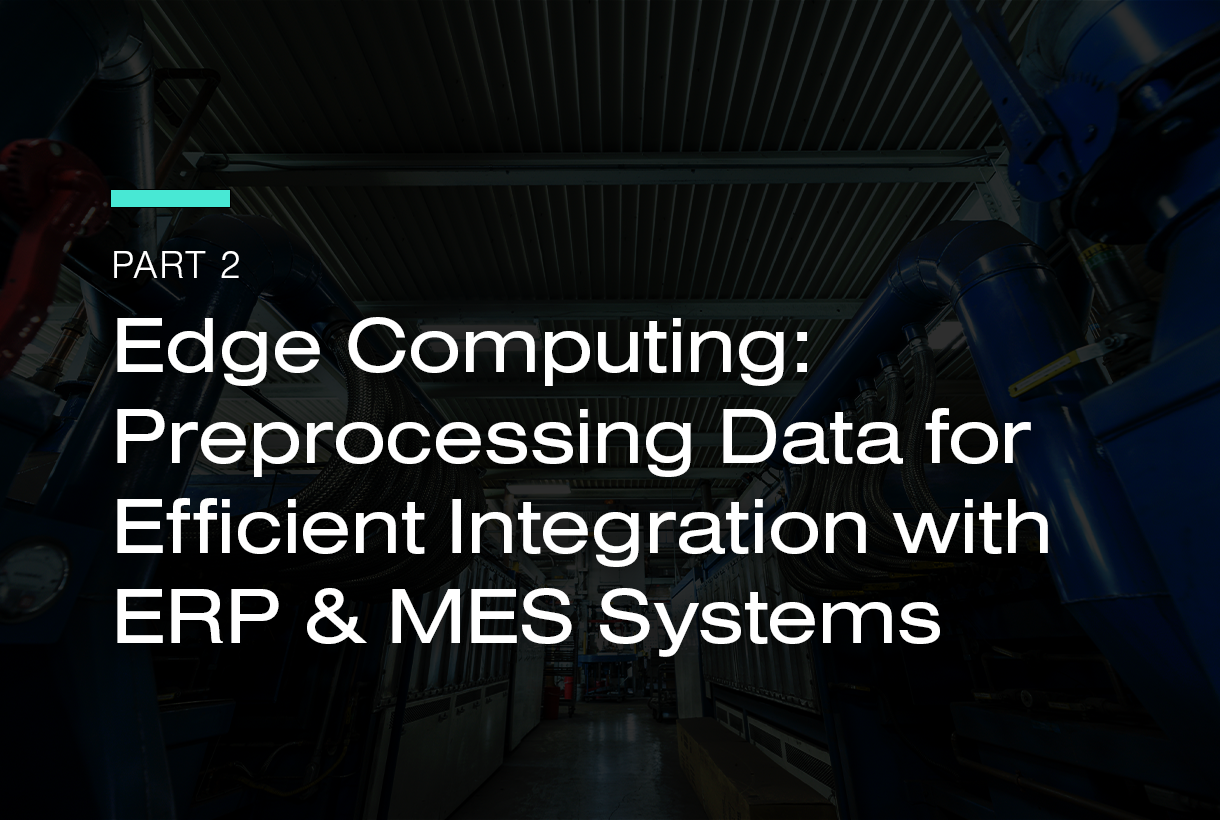

Now Available!
Get your copy of the 7th Annual State of Smart Manufacturing and hear from 300+ manufacturers in this new survey report!
Subscribe to Our Blog
For a monthly digest of expert insights, data points, and tips like the ones in this article.
Laying the Groundwork: Current State Analysis & Understanding the Data Communications Landscape – Part 1
Digital TransformationIn the modern manufacturing landscape, the synergy between plant floor operations and enterprise systems is the linchpin of a truly connected, intelligent production environment. At the foundation of this ecosystem, automation and control systems gather the vital signs of the manufacturing processes, but their true potential is harnessed only when this data informs the broader organizational objectives facilitated by ERP and MES.
Achieving this level of integration is not without its challenges, requiring a robust framework and adherence to industry best practices. In this blog post, we'll cover the blueprint and strategy for assessing your current state and building fundamental knowledge to streamline communication between automation and control systems and enterprise business systems.
Laying the Groundwork: Current State Analysis
Catalog Existing Systems and Infrastructure:
- Inventory Hardware: Detail all automation and control system hardware, including PLCs, DCSs, HMI/SCADA, sensors, controllers, and communication infrastructure.
- Document Software: Record automation and control system software versions, ERP, MES, QMS, and other enterprise business systems, databases, and any legacy or third-party applications in use.
- Network Topology: Create a detailed map of how devices and systems are interconnected and communicate.
Data Flow and Storage Analysis:
- Determine how data currently flows through your systems, from acquisition at the edge to storage and display.
- Assess current data storage capacities, retrieval speeds, backup solutions, and impending scalability issues.
Evaluate Current Data Structures:
- Examine the structure of the data generated by the automation and control systems.
- Compare this to the input requirements of ERP, MES, QMS, and other enterprise business systems to identify potential incompatibilities or transformation needs.
Identify Communication Protocols:
- Document the communication protocols currently in use (e.g., Modbus, Profibus, OPC UA, etc.).
- Understand any limitations or incompatibilities these protocols might pose for broader system integration.
- Analyze the data processing capabilities to handle increased data flows post-integration.
Assess System Health and Maintenance:
- Review maintenance logs and downtime incidents.
- Conduct a vulnerability assessment to gauge system health, identify potential points of failure, and understand current system resilience.
Cybersecurity:
- Assess vulnerabilities associated with internal and external networks, integrations, and interfaces.
- Review any vulnerabilities associated with specific automation and controls software applications.
- Understand the current state of data accuracy, data integrity, and data access and vulnerability.
Understanding the Communication Landscape
Edge Layer: At the edge, data is raw and often vast in quantity. Sensors, control systems, and local edge devices are responsible for collecting real-time data regarding machine status, product quality, environmental conditions, and operator interactions. Examples include temperature readings, machine operating states, energy consumption metrics, vibration levels, and much more.
Data Characteristics at Edge:
- High granularity and frequency
- Often time-stamped and sequential
- Can be structured or unstructured
- Predominantly operational rather than financial or business-oriented
Edge Data Communication Needs:
- Rapid and reliable transmission methods
- Local processing to reduce latency
- Initial filtering and aggregation to reduce noise
- Edge computing resources for preliminary analytics
MES/MOM Layer: The MES (Manufacturing Execution System) or MOM (Manufacturing Operations Management) layers translate granular plant floor data into actionable information. Examples include work order status, production counts, downtime incidents, quality metrics, inventory levels, and much more.
Data Characteristics at MES/MOM:
- Aggregated and contextualized
- Correlated with production orders, schedules, and resource status
- Used for in-process tracking, WIP (Work in Progress) monitoring, and operations scheduling
MES/MOM Data Communication Needs:
- Protocols that support structured data formats (e.g., XML, JSON)
- Middleware that can orchestrate data flow and transformations
- Systems that enable data visualization for operational oversight
ERP Layer: ERP (Enterprise Resource Planning) systems synthesize information from across the enterprise to inform strategic and financial decision-making. Examples include sales forecasts, production scheduling, inventory valuation, procurement data, financial data, and much more.
Data Characteristics of ERP:
- Highly processed and summarized
- Integrated with financial, HR, and supply chain data
- Oriented towards business outcomes, efficiency, and profitability
ERP Data Communication Needs:
- Secure and reliable data transfer protocols for inter-system communication
- Data mapping to ensure compatibility with financial and business modules
- Scheduled batch processing to align with business cycles and reporting needs
The Place to Start
A connected and intelligent production environment, formed through the synergy between plant floor automation and control systems and enterprise business systems, is one of the big goals of any modern manufacturing operation. To make this a reality, automation and control systems must gather the data from the manufacturing processes, but then that data must inform the broader organizational objectives usually facilitated by ERP, MES/MOM, and QMS.
But making this goal a reality is not easy and not without many challenges. Getting started toward building a robust framework using industry best practices requires a thorough assessment of your current situation. It also requires that you understand the fundamental approaches to data communications between automation and control systems and enterprise business systems. This is the place to start.
In my next blog we’ll take a closer look at edge computing and how it fits in with the overall approach required to build the synergy between the plant floor systems and the business systems. In the meantime, read this guide on leveraging a cloud-based MES.
This article was previously published by Harneet on MESA (Manufacturing Enterprise Solutions Association) International’s website.


